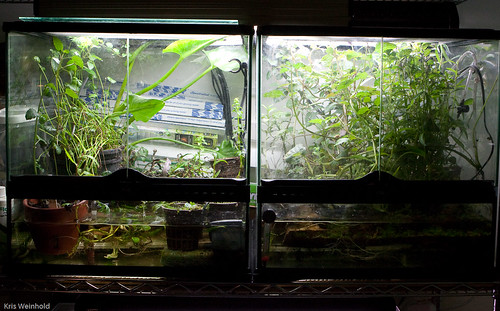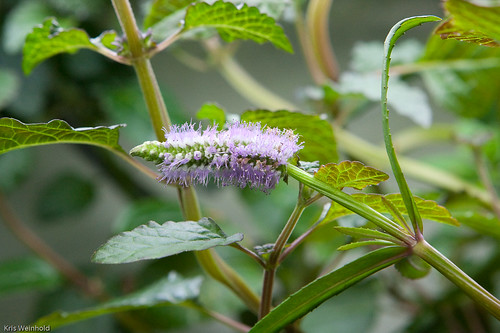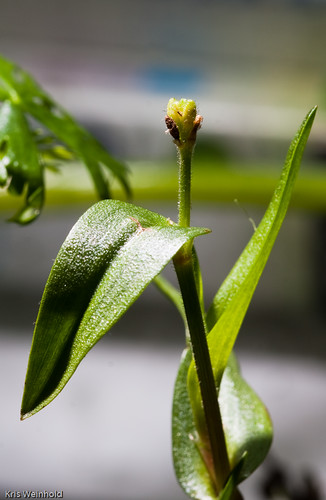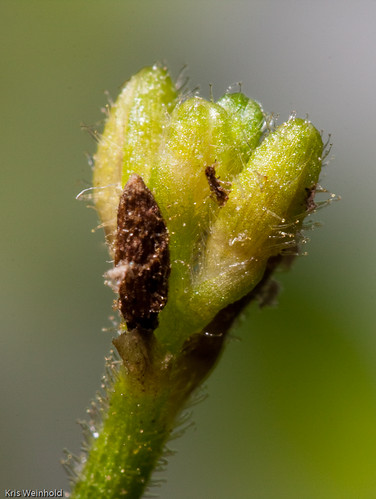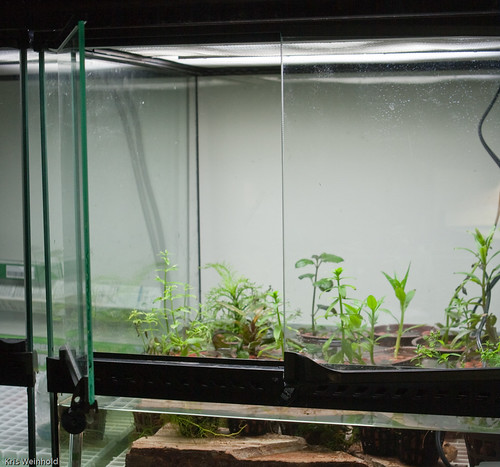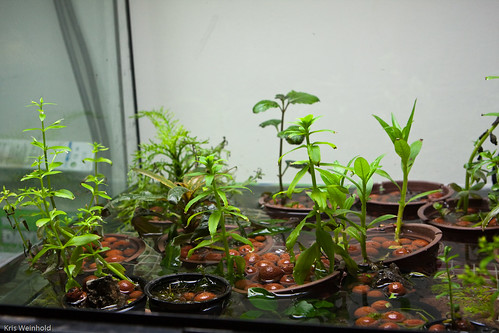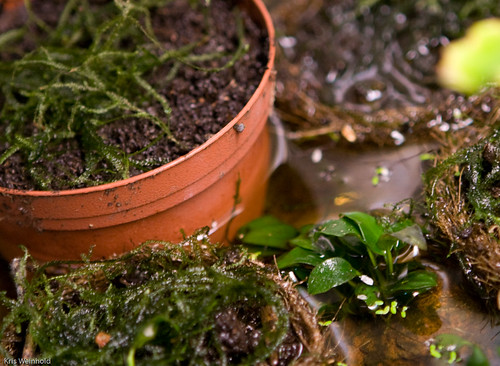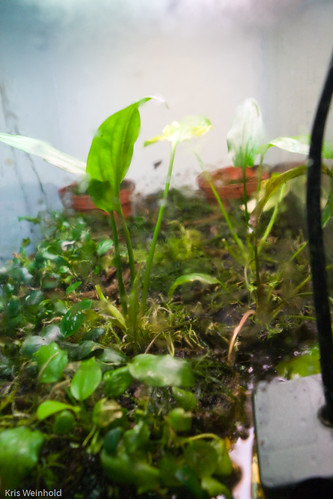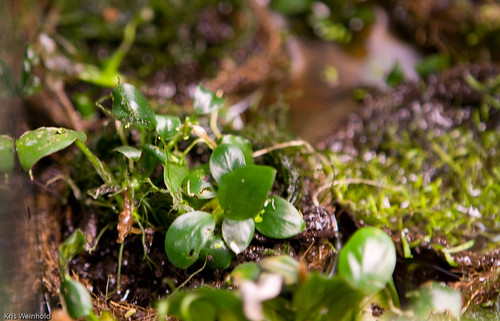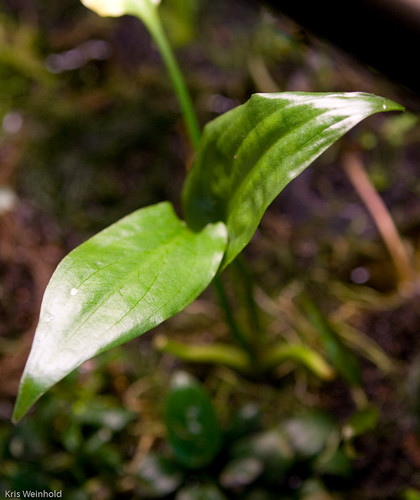Emersed Setups Need Attention Too
January 13th, 2010I’ve often talked about the wonderful benefits of having a place to grow your aquatic plants emersed:
- A place to store plants you don’t want in your aquariums anymore but don’t want to lose
- Ability to see flowers that you wouldn’t otherwise see
- Algae-free!
- Easy to maintain since growth is slower
While all of these statements are true, this doesn’t mean that you can just setup and forget about an emersed setup. A prime example of what can happen is in the picture below. Look at the setup on the right, and take note of what a tangled mess the plants are in there. Hyptis lorentziana and Pogostemon stellatus var. ‘Broad Leaf’ are the two culprits, taking a little while to establish, but then going absolutely insane in growth over the next few months.
I did get a number of Pogostemon flowers, but unfortunately the overgrowth shaded and outcompeted virtually every other plant I had stored in this setup. I surely would have had more plant-mass if I had grown these plants submersed in my aquarium, but I should have done a better job occasionally pruning back the stems as you would a weedy plant in your garden.
In the other emersed setup, I’ve had a different problem. I made the mistake of introducing a pot of plants that was in my pond, and I believe the soil contained spider mites. I originally tried a DIY organic spray of vegetable oil and dish soap, but that ended up killing more plants than it did the intruders. I wanted to avoid using pesticides since I am not keen on spraying chemicals inside of the house (or outside for that matter), so I am now in the process of completely emptying out both emersed setups, submerging the plants in a bucket for 48 hours to drown the spider mites, and will then repot and set back up the two setups anew.
I will begin this process just as soon as the plant sold in the hobby as Murdannia sp. ‘Red’ finishes flowering. Above is a picture of a flower just before maturation. I’ve hoping that my friend will be able to use the flower to research its true scientific name. The long and short is that emersed setups are still valuable tools to grow and store aquatic plants, but they still require some maintenance. I suppose that if I didn’t keep any stem plants in my setups that the length of time between maintenance could be significantly reduced. Comments/suggestions welcome!
